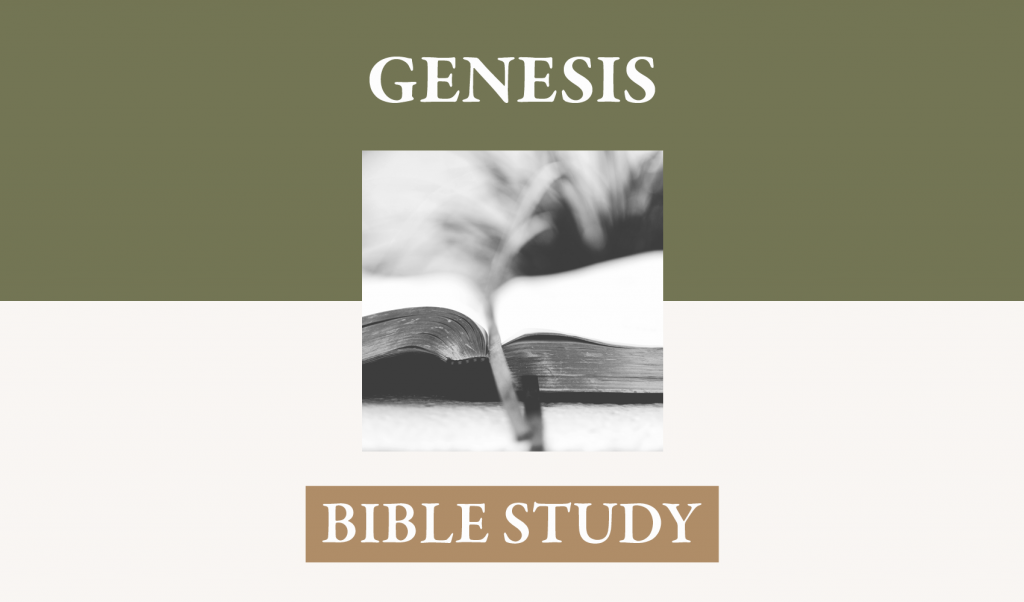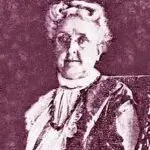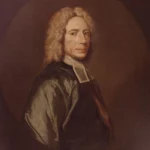Lesson Focus: This lesson can help you understand that you were made for a relationship with God and how sin severed that relationship.
God Creates: Genesis 1:1,26-27.
[1:1] In the beginning, God created the heavens and the earth. [26] Then God said, "Let us make man in our image, after our likeness. And let them have dominion over the fish of the sea and over the birds of the heavens and over the livestock and over all the earth and over every creeping thing that creeps on the earth." [27] So God created man in his own image, in the image of God he created him; male and female he created them. [ESV]
[1] The account opens with a clear, concise statement about the Creator and the creation. Its simplicity belies the depth of its content. These seven Hebrew words are the foundation of all that is to follow in the Bible. The purpose of the statement is threefold: to identify the Creator, to explain the origin of the world, and to tie the work of God in the past to the work of God in the future. The Creator is identified in 1:1 as God, that is, Elohim. The regular appearance of Elohim in 1:1-2:3 rather than Yahweh is due to the theological emphasis of the section. Creation extols God’s transcendence and the power of His spoken word; thus Elohim is preferred, whereas Yahweh commonly is associated with the particular covenant agreement between God and Israel. It is not difficult to detect a polemic against idolatry behind the words of 1:1. By identifying God as the Creator, a crucial distinction is introduced between the God of the patriarchs and the gods of the nations – gods that to the biblical authors were mere idols. God alone created the heavens and the earth. Psalm 96:5 shows that the full impact of Genesis 1:1 was appreciated by later biblical writers: For all the gods of the peoples are worthless idols, but the Lord made the heavens. The statement in 1:1 not only identifies the Creator, it also explains the origin of the world. God created all that exists. As it stands, the statement is an affirmation that God alone is eternal and that everything else owes its origin and existence to Him. The influence of this verse is reflected in the thoughts found throughout the work of later biblical writers [e.g., John 1:3; Heb. 11:3].
[26-27] The crown of God’s handiwork is human life. The narrative marks the prominence of this creative act in several ways: (1) the creation account shows an ascending order of significance with human life as the final, thus pinnacle, creative act; (2) of the creative acts, this is the only one preceded by divine deliberation (Let us make); (3) this expression replaces the impersonal words spoken in the previous creation acts (Let there be); (4) human life alone is created in the image of God and has the special assignment to rule over the created order; (5) the verb created occurs three times in verse 27; and (6) the event is given a longer description than the previous ones. When we consider verse 26, we are faced with two interpretive dilemmas. First, what or who are the plural pronouns let us and our image … our likeness referring to? Second, what is the significance of the terms image and likeness for understanding the unique place of human life in the divine scheme of creation? In what way can the author claim that mankind corresponds to God? The two issues are interrelated since in order to understand the image we must also hold before us the question of its Maker’s identity. The most popular answer to the plural question is that it refers to a divine dialogue within the Godhead, an intra-Trinity dialogue. Our passage describes the result of God’s creative act by both plural and singular pronouns: the plural possessive our image in verse 26 and the singular pronoun his image in verse 27. Here the unity and plurality of God are in view. Man is the generic term for mankind here and not to the individual, Adam. The inclusive meaning is transparently the correct understanding from the plural verb that follows, let them have dominion, as well as the plural pronouns of verses 27-28. Specifically, verse 27 indicates that man is created with sexual distinctions, male and female. Thus by the term man all human life is said to be created in the image and likeness of God. In Genesis the terms image and likeness occur in just three passages [1:26-27; 5:1,3; 9:6], but these are very important terms. We cannot look at 1:26-28 without viewing it through the prism of human sin, both in its beginning in the garden and its consequences for human life and humanity’s relationship to creation. Theologically, it is essential for interpreting the Christian faith with its proclamation regarding human life, the universal sinfulness of mankind, and the sole resolution of sin through the incarnation, death, and resurrection of Christ. Although Genesis tells who is created in the image of God, both man and woman, it does not describe the contents of the image. The passage focuses on the consequence of that creative act, which is humanity’s rule over the terrestrial world of life. That lofty position merited the divine bestowal of glory and honor [Ps. 8:5] that one and at the same time acknowledged human creatureliness and yet honored mankind above all creatures. Mankind is appointed as God’s royal representatives to rule the earth in His place. When sin marked the human family as disobedient children, however, they did not lose the image [9:6; 1 Cor. 11:7; James 3:9]; rather, the glory of sonship faded. In the New Testament these ideas of image, glory, and sonship are found closely related [e.g., 1 Cor. 11:7; 2 Cor. 3:18; 4:4,6; Heb. 2:5-10]. By the grace of the Creator the new humanity is created in the “image of Christ” and through His perfect obedience achieves life and glory for believers as His adopted children [e.g., Rom. 8:17,30; 9:23; 1 Cor. 4:4,6; Col. 3:9-10]. Verse 27 amplifies on the idea of the image of God introduced in verse 26. The construction of verse 27 is an embedded poem consisting of three lines, with lines one and two in inverted repetition and the last line an explication. The repetition identify the focus of the poetic verse: the divine image. The third line specifies that man, created in the image of God, refers to both male and female human life. Male and female human members are image-bearers who both are responsible for governing the world.
People Rebel: Genesis 2:15-17; 3:6-7.
[15] The LORD God took the man and put him in the garden of Eden to work it and keep it. [16] And the LORD God commanded the man, saying, "You may surely eat of every tree of the garden, [17] but of the tree of the knowledge of good and evil you shall not eat, for in the day that you eat of it you shall surely die." [3:6] So when the woman saw that the tree was good for food, and that it was a delight to the eyes, and that the tree was to be desired to make one wise, she took of its fruit and ate, and she also gave some to her husband who was with her, and he ate. [7] Then the eyes of both were opened, and they knew that they were naked. And they sewed fig leaves together and made themselves loincloths. man said, "The serpent deceived me, and I ate." [ESV]
[15-17] The author has already noted that God put man in the garden [2:8]. In 2:15 he returns to this point and recounts God’s purpose for doing so. There is an important point in verse 15 that is in danger of being obscured by the English translations. It is the change from verse 8 in the Hebrew word for put. Unlike verse 8, where a common term for put is used, in verse 15 the author uses a term he elsewhere reserves for two special uses: God’s rest or safety, which He gives to humanity in the land [19:16], and the dedication of something in the Lord’s presence [Ex. 16:33-34]. Both senses of the term appear to lie behind the author’s use of the word in verse 15. Man is put into the garden, where he can rest and be safe, and man is put into the garden in God’s presence, where he can have fellowship with God [3:8]. In verse 16 we read for the first time that God commanded the man whom He had created. As in the rest of the Torah, enjoyment of God’s good land is contingent on keeping God’s commandments. The inference of God’s commands in 2:16-17 is that only God knows what is good for humanity and only God knows what is not good for them. To enjoy the good, humankind must trust God and obey Him. If they disobey, they will be left to decide for themselves what is good and what is not good. While to our modern age such a prospect may seem desirable, to the author of Genesis it is the worst fate that could have befallen humankind, for only God knows what is good for humanity.
[3:6-7] An important narrative clue highlights the beginning of the woman’s transgression. Even before she has eaten of the fruit, the woman is depicted as already usurping God’s role of knowing what is good for them. As she eyes the tree and its fruit, just moments before taking her first bite, we the readers are allowed to listen in on her thoughts, and, consequently, her underlying motives for disobeying God: the woman saw that the tree was good [6]. The reader of this narrative will surely recall that in Genesis 1 it was clearly God alone who saw that it was good. Now, instead of God, it is the woman who saw what was good. The story now comes to an abrupt conclusion in its account of a double act of the transgression: she took of its fruit and ate, and she also gave some to her husband who was with her, and he ate. How quickly the transgression comes once the decision has been made! The thrust of the story, with all its simplicity, lies in the tragic and ironic view it gives of humanity’s ill-fated quest for wisdom. Ironically, what the snake promised comes true: the man and the woman do become like God when they eat of the fruit. The irony lies in the fact that in their creation they were already like God; they had been created in His image. Yet when they eat of the fruit and their eyes are opened, it is not the good they see and enjoy. Their new knowledge is only of their nakedness and consequent shame, and they knew that they were naked.
Sin has Consequences: Genesis 3:14-19,23-24
[14] The LORD God said to the serpent, "Because you have done this, cursed are you above all livestock and above all beasts of the field; on your belly you shall go, and dust you shall eat all the days of your life. [15] I will put enmity between you and the woman, and between your offspring and her offspring; he shall bruise your head, and you shall bruise his heel." [16] To the woman he said, "I will surely multiply your pain in childbearing; in pain you shall bring forth children. Your desire shall be for your husband, and he shall rule over you." [17] And to Adam he said, "Because you have listened to the voice of your wife and have eaten of the tree of which I commanded you, ‘You shall not eat of it,’ cursed is the ground because of you; in pain you shall eat of it all the days of your life; [18] thorns and thistles it shall bring forth for you; and you shall eat the plants of the field. [19] By the sweat of your face you shall eat bread, till you return to the ground, for out of it you were taken; for you are dust, and to dust you shall return." [23] therefore the LORD God sent him out from the garden of Eden to work the ground from which he was taken. [24] He drove out the man, and at the east of the garden of Eden he placed the cherubim and a flaming sword that turned every way to guard the way to the tree of life. [ESV]
[14-15] Whereas the snake has been crafty [1], he is now cursed, the most cursed of the animals. It is his curse that distinguished him above all livestock and above all beasts of the field. What this means in the immediate context is that he must crawl on your belly … and dust you shall eat all the days of your life. The curse of the snake for his part in the fall is to be a perennial reminder of the defeat of the rebellious seed. Initially in verse 15, enmity is established between the snake and the woman and between the seed of the snake and the seed of the woman. In the second half of verse 15, the seed of the woman is one (he) who will crush the head of the snake, bringing to an end the curse it brought on humanity. The woman’s seed is presented as one who lies in the distant future. Yet it is this same seed who is to crush the head of the snake. The crushing blow against the serpent will not be against the seed of the snake but against the snake itself. The snake is thus the enemy of the woman’s seed. The author views the snake in terms that extend beyond a particular snake of the garden. The snake is representative of someone or something else. This implies that there is more in this brief passage than initially meets the eye. A plot is set in motion that will take the author far beyond this or that snake and his seed. It is what the snake and his seed represent that lies at the center of the author’s focus. No attempt is made to answer the question of the snake’s role in the temptation over against the role of a higher being, e.g., Satan. That was, however, the nature of the drama later biblical writers saw in this story [see Rom. 16:20; Rev. 12:9]. Looking at the passage within the larger scope of the book and the pains taken by the author to construct a narrative out of just these small segments of discourse, much more surely lies behind these words. They are, after all, God’s first statements to the first sinner. The two sides represent two seeds, the seed of the snake and the seed of the woman. In the ensuing battles a seed of the woman will crush the head of the snake. Though wounded in the struggle, the woman’s seed will prove victorious. Verse 15 thus contains a puzzling yet centrally important question: Who is the seed of the woman? The purpose of this verse is not to answer that question but to raise it.
[16-19] The judgment against the woman relates first to her children and then to her husband. She will now bear children in increased pain or toil. Her desire will be for her husband, and he will rule over her. The woman and her husband were to have enjoyed the blessing of children [1:28] and the harmonious partnership of marriage [2:18,21-25]. God’s words of judgment relate to these two points. What was to be the woman’s source of blessing – to be a marriage partner and have children – is now tainted by the curse. In those moments of life’s greatest blessing – marriage and children – the woman will feel most painfully the consequences of her foolish act. Next the good land provided by the Creator in chapters 1 and 2 is cursed. Human beings can no longer freely eat of the fruits of the land. In chapters 2 and 3 the author closely charts humanity’s continuing relationship with their Creator by indexing it to the theme of eating. As the story begins, God’s blessing and provision are signaled by the words you may surely eat [2:16] from any tree in the garden. Those words recall the good gifts in chapter 1 and the concluding affirmation that all was then very good [1:31]. The issue in chapter 3 is once again eating. By posing the question of what the man and woman can and cannot eat, the tempter raises doubts about God’s goodness and care for them [3:1-3]. Finally, the humans’ act of disobedience in chapter 3 is narrowed down simply, and thoughtfully, to the repetition of the single word “eat”: she ate the fruit and her husband ate. It is not surprising, then, that the author calls attention to eating in describing the divine judgment on the man: cursed is the ground because of you; in pain you shall eat of it all the days of your life. The focus on eating which seems to dominate the author’s depiction of the fall, is related to the author’s interest elsewhere in the importance of eating and its association with the relationship of humankind to God. The description of the land in verse 18 is a reversal of the state of the land as it was described in chapter 2. In drawing a contrast between the condition of the land before and after the fall, the author suggests that the present condition of the land is not the way it was intended to be. The present condition of the land is the result of humankind’s rebellion. The author thus paves the way for a central motif in the world of biblical eschatology: the hope of a new heaven and a new earth [Rev. 21:1]. Verse 18 shows the reversal of the condition of the land before and after the fall. Verse 19 reverses humankind’s condition. Before the fall man was created from the ground and given the breath of life [2:7]. As a result of the fall, humankind must return to the ground and the dust from which they were taken. In these reversals the author suggests that the death sentence [2:17] has now fallen over God’s good creation.
[22-24] The sentence of death now leveled against the man and the woman consists of being cast out of the garden and being barred from the tree of life. The transgression of Adam and Eve means they will be cast off from the protection of the garden. The author uses irony to show man’s fall and his folly. The man and the woman sought to be like God. Their goal was obtained but, ironically, proves undesirable. The man and woman, who were created like God in the beginning [1:26], find themselves after the fall to be like God, but curiously no longer like God in the same way. Their original likeness was the basis of their fellowship with God in the garden [22]. Their newly acquired likeness to God means their being cast out of God’s presence. In the subtle verbal interchanges of this passage, the author shows that humankind’s happiness does not rest in being like God so much as being with God, that is, enjoying the blessings of God’s presence [Ps. 16:11]. To underscore the reversals that humankind suffers as a result of rebelling, the author again resorts to a wordplay. In 2:15 the man was put into the garden to worship God by working and keeping the garden; but here in 3:23, after the fall, the man is cast out of the garden to work the ground and is kept from the way to the tree of life. In depicting the garden and the tree of life, the author anticipates God’s plan for blessing in the Sinaitic covenant. The tree of life stands guarded by the cherubim – just as in the Sinaitic covenant the ark is guarded by the cherubim [Ex. 25:10-22]. Only through the covenant can humankind’s fellowship with God be restored. In the covenant humankind is returned to the state man originally enjoyed in Genesis 2:15, that is, as one who serves, obeys, and enjoys the blessing of God.
Questions for Discussion:
1. Think about the significance of God being the Creator of all things. What does it say about God? What implications does it have for our worship and devotion to Him; about our submission and obedience?
2. How do these verses show that the creation of human life is the crown of God’s handiwork? What is the significance of the terms likeness and image for understanding the unique place of human life in the divine scheme of creation?
3. What is the significance of the Hebrew word for put in 2:15 for understanding both the blessing and the responsibility God gave man in the garden? Note in 3:6-7, the consequences that sin has on the blessing and responsibility of being put in the garden.
4. In 3:14-24, we see the consequences of sin in the way God punishes it. Basically the punishment for sin is a reversal of the created order which God declared as very good [1:31]. List all the “reversals” you see in 3:14-24. Now meditate on how Christ’s redemptive work begins the process of removing these “reversals” which will be completed when He returns and sets up His eternal kingdom.
References:
Genesis, James Boice, Baker.
Genesis, Kenneth Mathews, NAC, Broadman.
Genesis, John Sailhamer, EBC, Zondervan.

















